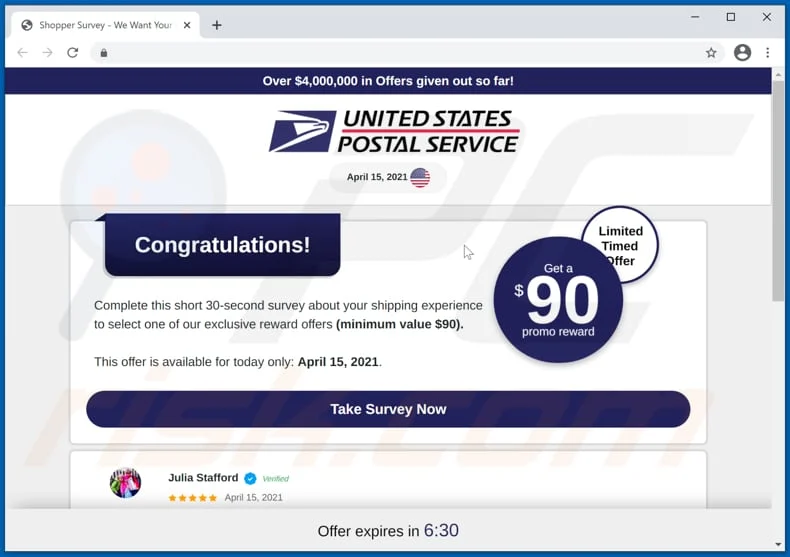In today’s digital age, where convenience and efficiency reign supreme, email has become an integral part of our daily lives. However, it has also opened the door to various online scams and phishing attempts. One such scam that has been making the rounds is the “US9514901185421” USPS scam email. In this article, we will delve into the details of this scam, how to identify it, and protect yourself from falling victim. Additionally, we will provide answers to frequently asked questions (FAQs) related to USPS scams and spammy tracking numbers.
The US9514901185421 USPS Scam Email: What You Need to Know
What is the US9514901185421 USPS Scam Email?
The US9514901185421 USPS scam email is a fraudulent email that pretends to be from the United States Postal Service (USPS). It typically includes a subject line related to a package or delivery and contains a tracking number that starts with “US9514901185421.” The goal of this scam is to trick recipients into clicking on malicious links or downloading harmful attachments.
How to Identify the Scam Email
Here are some key indicators that can help you recognize the US9514901185421 USPS scam email:
- Sender’s Email Address: Check the sender’s email address carefully. Scam emails often use fake or suspicious addresses that don’t match the USPS’s official domain (usps.com).
- Spelling and Grammar: Poor spelling and grammar are telltale signs of a scam. Be wary of emails with glaring language errors.
- Urgent Language: Scammers often use urgency to pressure recipients into taking immediate action. Watch out for phrases like “urgent delivery” or “your package is at risk.”
- Suspicious Links or Attachments: Avoid clicking on any links or downloading attachments from unsolicited emails, especially if you’re not expecting a package.
- Request for Personal Information: Legitimate organizations, including USPS, will never ask you to provide sensitive personal information via email.
FAQs: Protecting Yourself from USPS Scams and Spammy Tracking Numbers
1. What should I do if I receive a suspicious USPS email?
If you receive an email that you suspect is a scam, do not click on any links or download attachments. Instead, forward the email to the USPS at spam@uspis.gov and then delete it from your inbox.
2. What can scammers do with my personal information?
Scammers can use your personal information for identity theft, fraud, or other malicious purposes. Never share sensitive information in response to unsolicited emails.
3. How can I verify the authenticity of a USPS email?
Visit the official USPS website (usps.com) and use their tracking tool directly, rather than clicking on links in emails. USPS will provide accurate information about your package’s status.
4. Can I report USPS scam emails to the authorities?
Yes, you can report USPS scam emails to the United States Postal Inspection Service (USPIS) at spam@uspis.gov. They investigate and take action against such scams.
5. How can I protect myself from email scams?
To protect yourself from email scams, be cautious about opening emails from unknown senders, don’t click on suspicious links or download attachments, and use up-to-date antivirus software.
6. Are there any official USPS communication methods other than email?
USPS may contact you through mail, phone, or in person, but they will never ask for sensitive information via email.
Conclusion
In a world where online scams and phishing attempts are becoming increasingly sophisticated, it’s crucial to stay vigilant. The US9514901185421 USPS scam email serves as a reminder to be cautious when dealing with unsolicited emails, especially those involving personal information or financial transactions. By staying informed and following best practices for online safety, you can protect yourself from falling victim to such scams and ensure your online experience remains secure. Remember, when in doubt, always verify the authenticity of an email with the official USPS website or contact them directly. Your online security is worth the effort.




